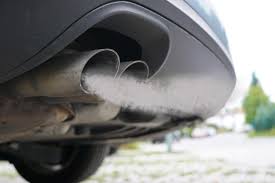2ARFE VS 2AZFE
- Get link
- X
- Other Apps
The 2ARFE VS 2AZFE Battle
A 2ARFE VS 2AZFE
Introduction
The Toyota 2AZ-FE and 2AR-FE are both naturally aspirated inline-four engines designed for mid-size sedans, crossovers, and SUVs, but they represent two different generations of Toyota’s engineering approach. The 2AZ-FE debuted in the early 2000s as a 2.4-liter workhorse for models like the Camry, RAV4, and Highlander, offering a balance of power and efficiency. The 2AR-FE, introduced in the late 2000s, replaced the 2AZ-FE with a slightly larger displacement, improved technology, and enhanced fuel economy. Comparing them highlights Toyota’s transition toward cleaner, more efficient engines without sacrificing everyday usability.
Specifications and Design
The 2AZ-FE is a 2.4-liter DOHC 16-valve engine with an aluminum block, aluminum head, and VVT-i on the intake camshaft. It produces around 160–170 horsepower and about 220 Nm of torque. The 2AR-FE, in contrast, is a 2.5-liter DOHC 16-valve engine with an aluminum block and Dual VVT-i, controlling both intake and exhaust cams. Output ranges from about 169–181 horsepower with torque slightly improved over the 2AZ-FE. The added displacement and dual cam phasing give the 2AR-FE more flexibility and efficiency.
Performance and Driving Experience
In real-world driving, the 2AZ-FE provides solid low- to mid-range torque, making it suitable for everyday commuting and light towing. However, its older VVT-i system limits efficiency and high-end breathing compared to newer engines. The 2AR-FE delivers smoother acceleration and better top-end pull thanks to Dual VVT-i, while also achieving better fuel economy. Drivers moving from a 2AZ-FE-equipped vehicle to a 2AR-FE model often notice a quieter, more refined feel along with slightly more responsive throttle behavior.
Reliability and Maintenance
Both engines are known for reliability, but they have their own quirks. The 2AZ-FE, especially in earlier years, is notorious for potential head bolt thread issues that can cause head gasket failure if not addressed. Oil consumption can also become a problem after high mileage. The 2AR-FE improved on these weaknesses with better block design and sealing, though some early units experienced coolant leaks due to water pump wear. Routine maintenance, quality oil, and proper cooling system care will keep either engine running well beyond 200,000 km.
Conclusion
In summary, the 2AZ-FE and 2AR-FE are both dependable Toyota engines, but the 2AR-FE is the more advanced and refined evolution. It offers improved performance, fuel efficiency, and durability compared to its predecessor, while maintaining the same practical power output for daily driving. The 2AZ-FE remains a solid choice in older models, especially if well-maintained, but for buyers prioritizing modern efficiency and fewer design-related issues, the 2AR-FE stands out as the better long-term option.
- Get link
- X
- Other Apps




Comments
Post a Comment